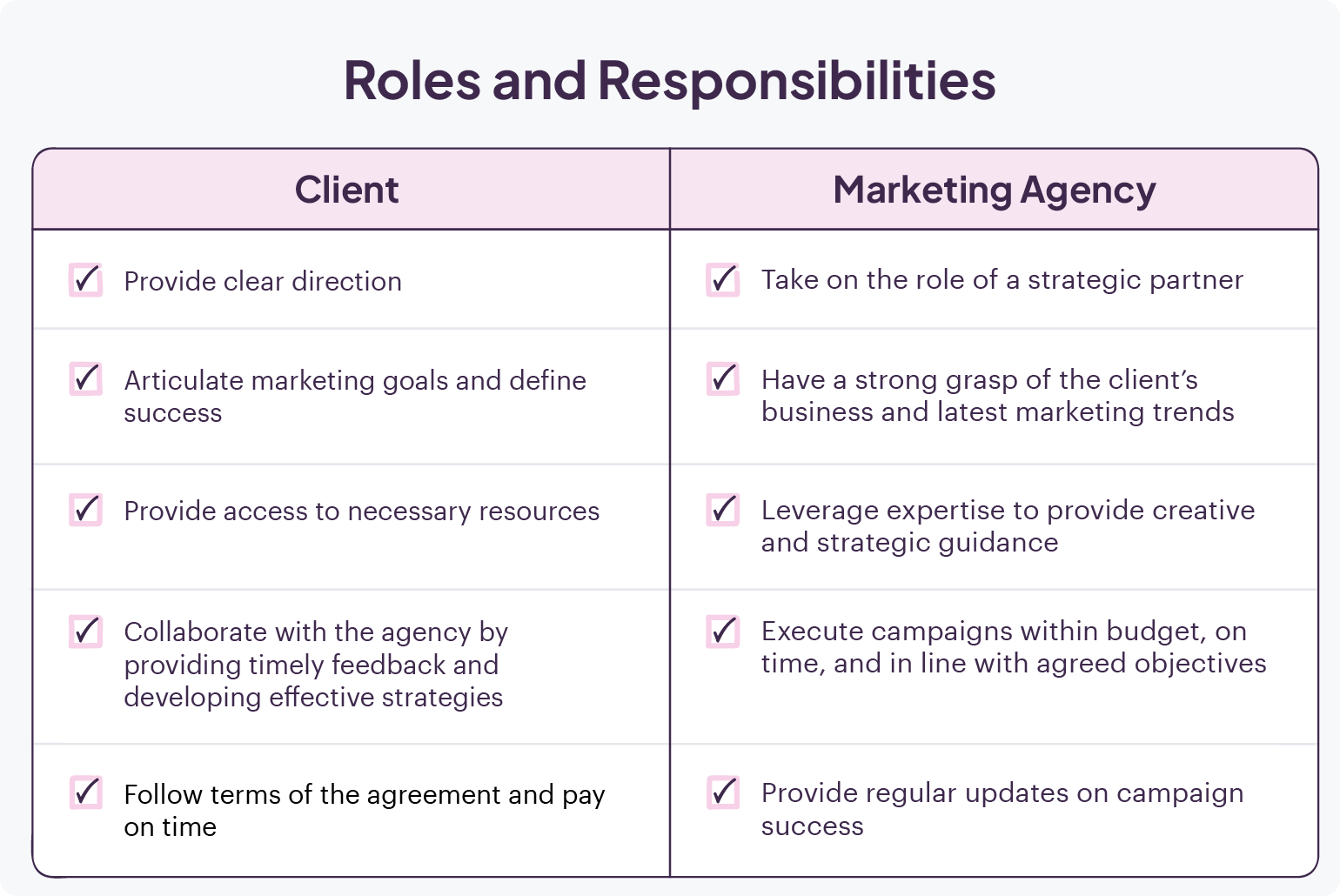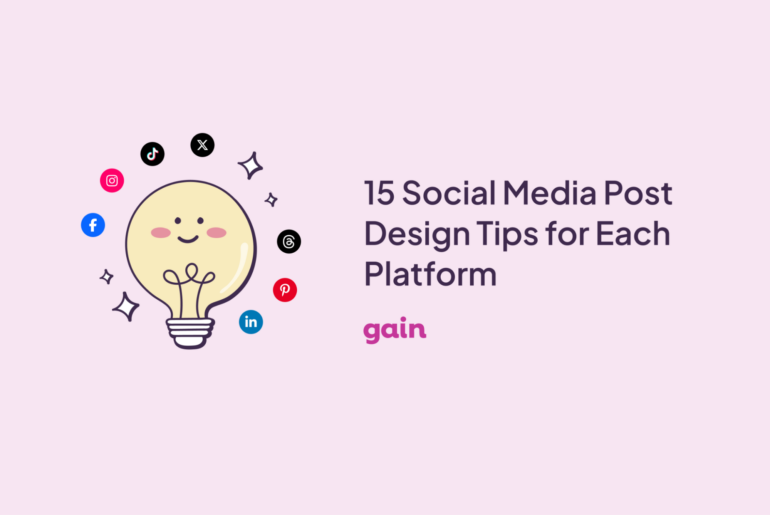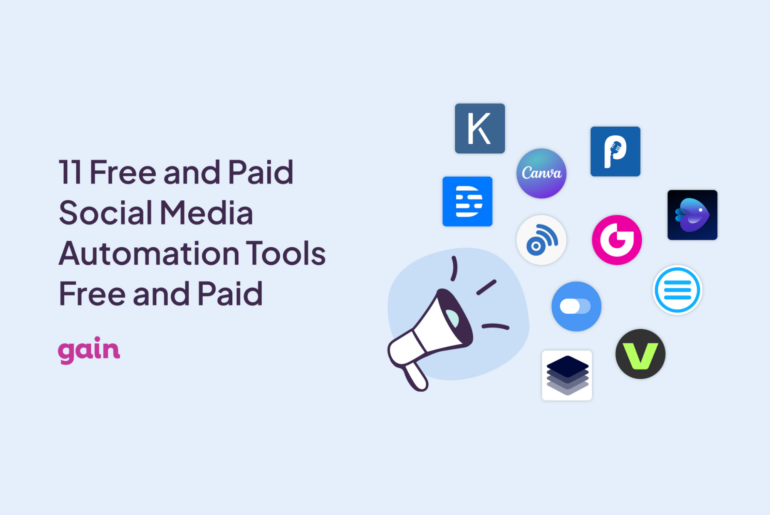You’ve just brought a new client on board. Congratulations! Kicking off the new client-agency relationship can be an exciting time for both parties. However, it’s essential to make sure you build a solid partnership from the start.
One study found that only 56% of brands are satisfied they have an honest and transparent relationship with their agencies which is a clear warning sign.
After all, every agency dreams of having a successful, long-lasting relationship with its client. And every client wants a solid agency partnership. So, how do you ensure you’re set up for success from the start?
Here’s our comprehensive guide to building a thriving client-agency relationship where both parties win.
What is the Client-Agency Relationship in Marketing?
In a nutshell, the client-agency relationship refers to a commercial partnership between a business or a brand (the client) and a marketing agency hired to develop and execute marketing campaigns and strategies.
The relationship is established on a collaborative basis where both parties work together to achieve the client’s goals and objectives, including but not limited to:
- building brand awareness and online presence
- improving customer engagement
- generating leads
- increasing sales
- expanding into new markets.
7 Stages of Client-Agency Relationship
The marketing agency-client relationship is built on several crucial stages. Getting each one right is vital to creating a successful partnership. Skipping or rushing through any stage could derail the entire marketing campaign, leaving the client and agency frustrated and disappointed.
So, what are these critical stages? Let’s take a look at them below.
1. Prospecting
In this first stage, you and your client evaluate your compatibility. Though it may sound like a concept straight out of the dating world, in reality, it is a critical step in establishing a successful partnership.
Both parties must ask the right questions to determine if the fit is right. Do you share similar core values? Does the client have sufficient resources to benefit from your services? Has the agency worked with businesses like yours in the past? These are just some key factors that must be considered during this evaluation process.
Additionally, the discussions in this stage center around the client’s marketing goals and objectives. Likewise, the agency presents its services and how it can help the client achieve their goals. The prospecting stage allows both parties to lay the foundation for a successful partnership and avoid conflicts.
2. Onboarding
You closed the deal and inked the contract… Now it’s time to bring your client on board and get things rolling.
The onboarding stage is about integrating your client into your agency’s workflow, setting up the tools, defining goals and objectives, and ensuring all team members are on the same page. Don’t overlook this critical step—proper onboarding is the key to setting your partnership up for success!
Looking for guidance on how to onboard a new client? Check out our free book on marketing client onboarding and unlock the secrets to seamlessly integrating your new client and setting the stage for success.
3. Discovery
The discovery stage is about diving into the client’s business, analyzing competitors, identifying current pain points, and examining hard data. HubSpot offers a 7-step process for running a client discovery process that includes:
- Defining client’s goals
- Conducting industry and competitive analysis
- Deep diving into data
- Auditing client’s marketing assets
- Performing SEO analysis
- Interviewing the stakeholders
- Experiencing the brand.
However, the process can vary depending on the client. Regardless, the insights gained during this stage should inform the development of a marketing strategy.
4. Strategy
This is when the agency draws up a comprehensive marketing strategy with robust tactics tailored to the client’s specific needs. In this stage, the agency and client should agree on how they will measure the campaign’s success, including key performance indicators (KPIs) and deliverables.
5. Implementation
It’s time to put the plan into action! The marketing agency brings the campaign to life during this stage by executing the agreed-upon strategies and channels. This might involve creating content for social media or the blog, launching advertising campaigns, managing social media accounts, or developing email marketing campaigns.
6. Measurement
This is where the marketing agency and client get to see how the campaign performed against the goals and objectives. By diving into the data and metrics, both parties can identify what worked well and what needs improvement. Then, armed with these insights, they can make any necessary tweaks and set themselves up for even greater success in the future!
7. Renewal
Parting ways or continuing? In the renewal stage, the client and agency evaluate how things went. If the client is happy with the results, they’ll likely stick around. Meanwhile, the agency assesses whether the collaboration is viable in the long term. Ultimately, renewal hinges on the mutual satisfaction and compatibility of both parties.
Why Is a Strong Client-Agency Relationship Important?
Building a solid client-agency relationship beyond a mere transactional exchange is a win-win situation for both parties. Instead of just a contractual agreement, it should be a collaborative partnership between two businesses that share the same goal of driving the client’s bottom line.
After all, the client’s success translates into the agency’s success. By consistently delivering exceptional results, an agency can earn customer loyalty and establish a positive reputation that attracts new prospects.
Client vs. Agency Responsibilities & Roles
For a fruitful client-agency alliance, both parties must actively engage and collaborate. But things go wrong sometimes.
Lack of clearly defined roles and responsibilities, miscommunication, unrealistic expectations, scope creep, or simply a lack of trust can all contribute to relationship breakdown.
Thus, it’s imperative to establish the roles and responsibilities of both parties early on.

5 Elements of a Thriving Relationship Between the Agency and the Client
Now that we’ve covered the basics, it’s time to explore the critical factors that truly ignite the client-agency relationship for mutual success.
1. Transparency and Honesty
It’s essential to remember that both parties — the client and the agency — play a crucial role in a successful relationship. And the best partnerships have complete transparency on both sides.
Be upfront about things like your agency’s approach and compensation arrangement. Meanwhile, clients should be candid about their objectives and budgets. Although it may be challenging to approach some topics, discussing them beforehand ensures both parties are on the same page. Transparency also prevents misunderstandings from happening later down the road.
When it comes to client-agency communication, honesty is the best policy. For instance, don’t be afraid to tell a client if you think an element or concept doesn’t align with their overall vision or if it’s challenging to execute. It’s better to let them know upfront during initial planning versus telling them further into the process.
The same goes for clients. They should feel comfortable expressing disappointment or even happiness with a project result. Keep the lines of communication open.
2. Regular Communication
Communication is a significant part of the client-agency relationship. It’s crucial to communicate with clients regularly. Nothing makes a client uneasy more than not hearing from their agency.
For instance, keep clients in the loop with the status of their projects or campaigns. Involve them in the process so they have the opportunity to ask questions and request changes early on rather than when you’ve completed most of the work.
Be sure to set expectations at the start regarding how clients can contact you and how frequently you’ll touch base. This might include scheduling weekly calls to discuss projects, answering emails within a set time, or sending monthly campaign reports.
When you enter a new relationship with a client, they must understand what level of contact to expect and what you’ll need from them to keep things moving.
3. Understanding of Each Other’s Business
Both the client and the agency must have a good understanding of each other’s operations. Knowing how one another does business will affect the outcome of a project.
According to one survey, 80% of brands cite “understanding their business” as a significant factor when hiring an agency. Thus, if you don’t know your client’s business well, they’ll likely end up disappointed with the work you’ve done. It’s your responsibility to ask the right questions to get to know your client and their business.
Before you can help clients solve their problems, you must know how their industry works. The more you learn about them, the more you increase your odds of building a long-lasting client-agency relationship.
Likewise, encourage clients to participate fully in onboarding so you have the information you need to learn about their business.
4. Feedback from Both Sides
All trusted relationships require honest and regular feedback, and the client-agency relationship is no different. With feedback, both parties have the opportunity to gain insights and make improvements.
Agencies can facilitate the conversation by sending an annual assessment that allows both the client and agency to give one another feedback. This way, no one is in the dark.
5. A Solid Content Approval Process
Content approvals are a massive part of the client-agency partnership. Before starting any work with a client, set up an approval workflow. Otherwise, things can get out of hand fast.
Relying on emails and spreadsheets for client approval and feedback can be time-consuming, ultimately impacting the client-agency relationship negatively. No one wants to spend most of their day sending emails back and forth. Plus, it’s challenging to keep up with who has looked at what and see which content is 100% approved for posting.
A tool like Gain, however, can help save you time and streamline your team’s workflow. You can effortlessly set up Approval Workflows that automatically send content to stakeholders for feedback. This means you no longer need to manually request approvals or track changes. Additionally, Gain lets you know when stakeholders request changes or approve content. As an added bonus, your content gets automatically published after it’s approved.
A reliable content approval process prevents clients from forgetting about approvals, ensures deadlines are met, and things run smoothly — all of which contribute to a successful client-agency relationship.
Conclusion: Nurture a Relationship into a Lasting Partnership
Achieving a thriving client-agency relationship requires more than chemistry, effective systems, or a seamless approval process. Both parties must be committed to making it work for the long haul.
Agencies should prioritize mastering the essentials and going the extra mile for their clients. Brands should equip their creative agencies with the necessary resources and information for success.
Struggling with content creation at scale, and messy approvals are negatively affecting your relationship with the clients? Give Gain a try for free to streamline your approval processes today!

![5 Elements of a Successful Client-Agency Relationship [Guide] Team celebrating success](https://blog.gainapp.com/wp-content/uploads/2023/02/krakenimages-376KN_ISplE-unsplash.jpg)




